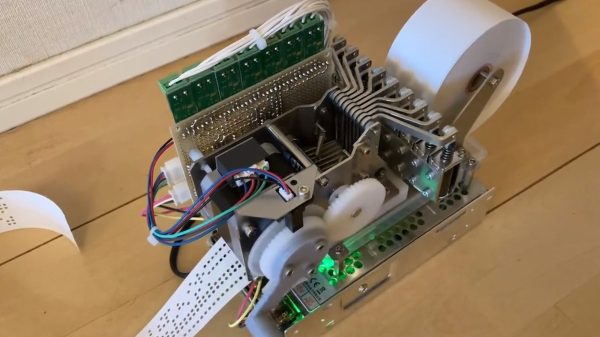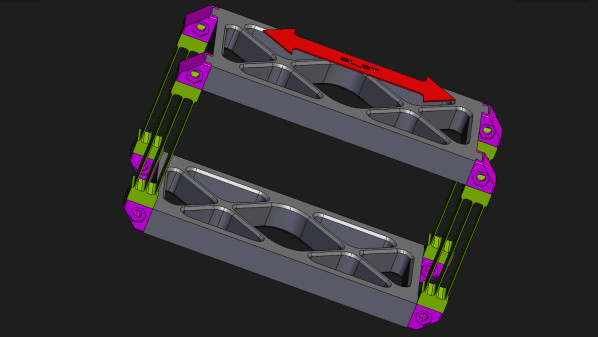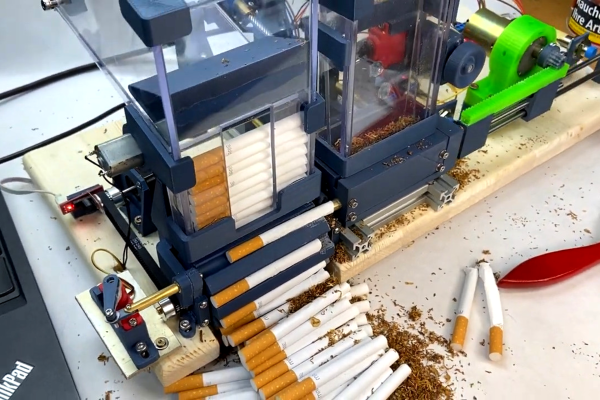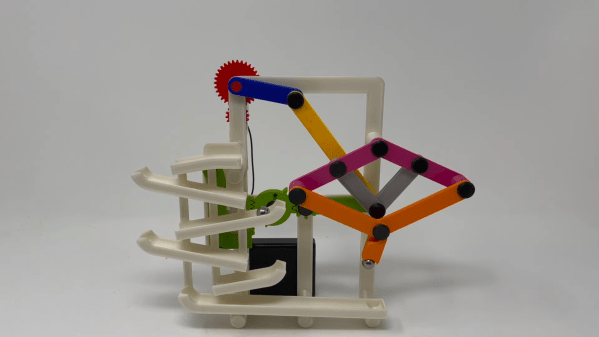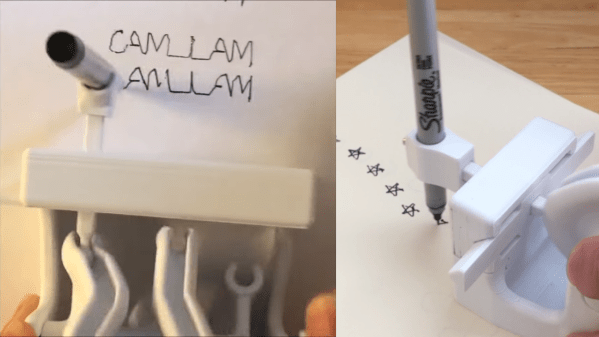A book of mechanical actions is a wondrous thing — mechanically inclined children have lost collective decades pouring over them over the generations. What could possibly be better? Why, if the mechanisms in the book were present, and moved! That’s exactly what [AxelMadeIt] produced for a recent video.
Being just four pages, you might argue this is but a pamphlet. But since it takes up a couple inches of shelf space, it certainly looks like a book from the outside, which is exactly what [AxelMadeIt] was going for. To get a more book-like spine, his hinge design sacrificed opening flat, but since the pages are single-sided, that’s no great sacrifice.
At only 6 mm (1/4″) thick, finding printable mechanisms that could actually fit inside was quite a challenge. If he was machining everything out of brass, that would be room for oodles of layers. But [Axel] wanted to print the parts for this book, so the mechanisms need to be fairly thick. One page has a Roberts linkage and a vault-locking mechanism, another has planetary gears, with angled teeth to keep them from falling out. Finally, the first page has a geneva mechanism, and an escapement, both driven by a TPU belt drive.
All pages are driven from an electric motor that is buried in the last page of the “book”, along with its motor, battery, and a couple of micro-switches to turn it on when you open the book and off again when you reach the last page. Rather than a description of the mechanisms, like most books of mechanical actions, [Axel] used multi-material printing to put lovely poems on each page. A nice pro-tip is that “Futura”, a font made famous by flying to the moon, works very well when printed this way. If you just want to watch him flip through, jump to 8:00 in the video.
This reminds us of another project we once featured, which animated 2100 mechanical mechanisms. While this book can’t offer near that variety, it makes up for it in tactility.
Continue reading “3D Printed “Book” Demonstrates Mechanical Actions”



